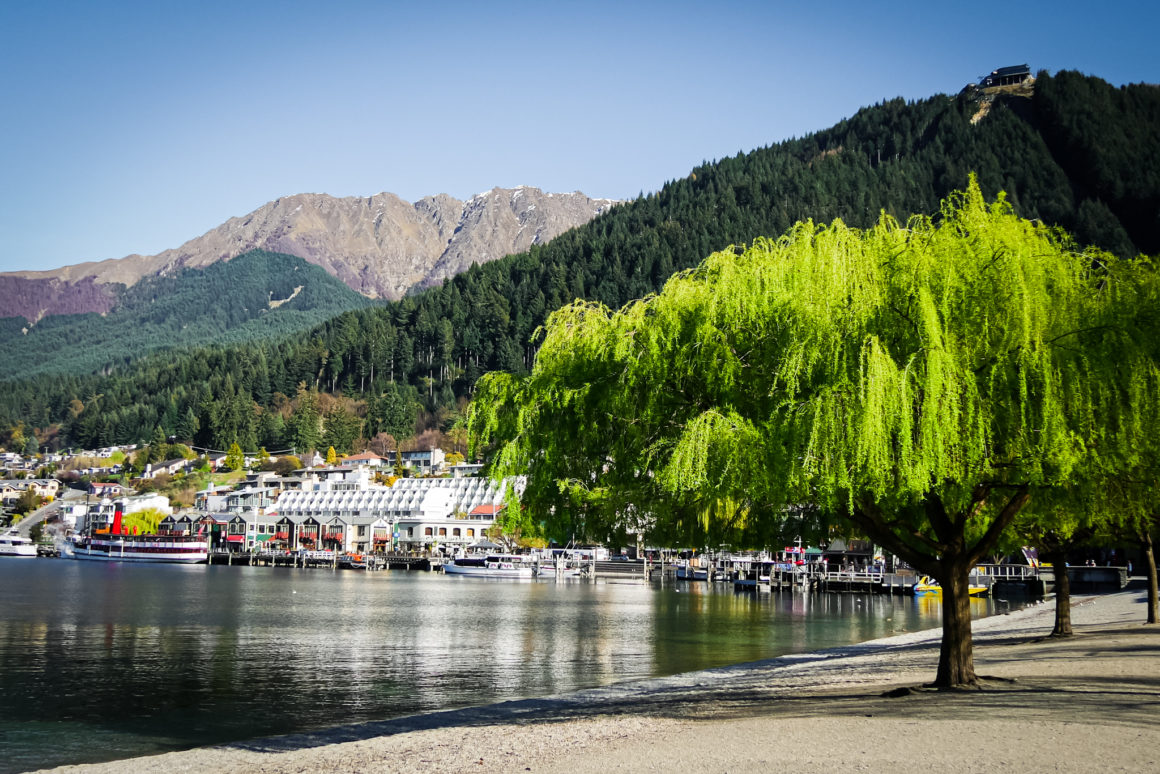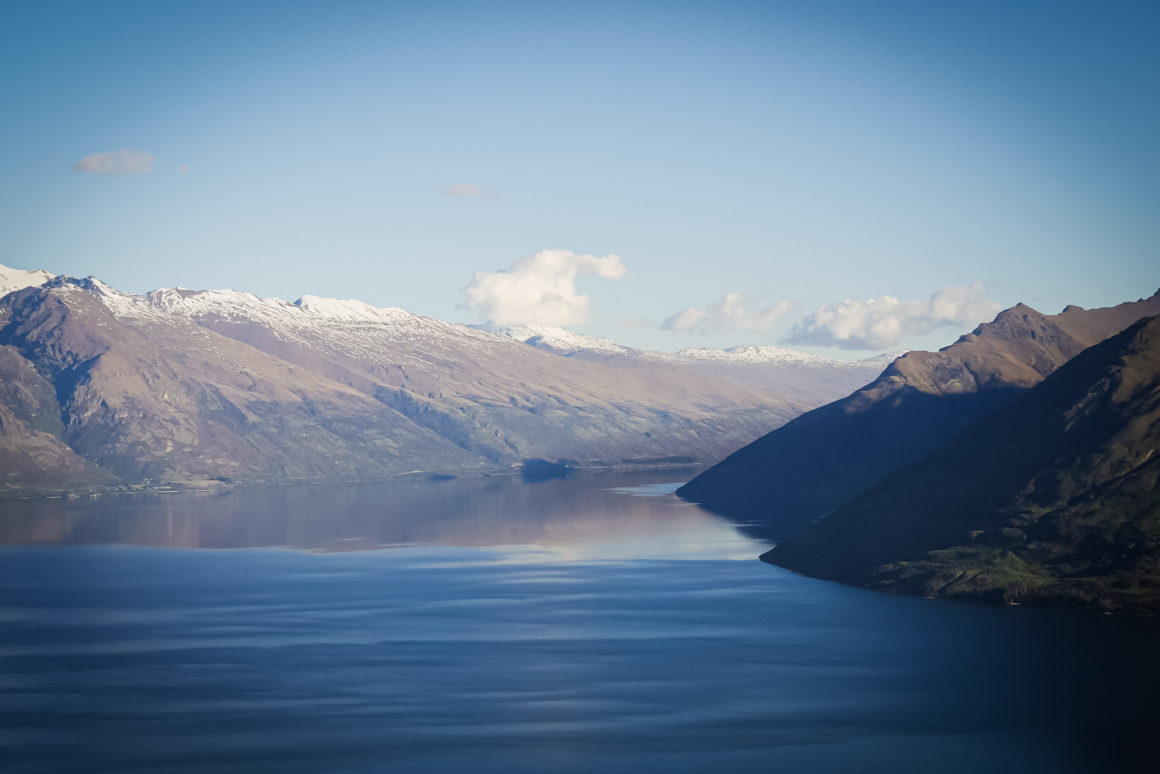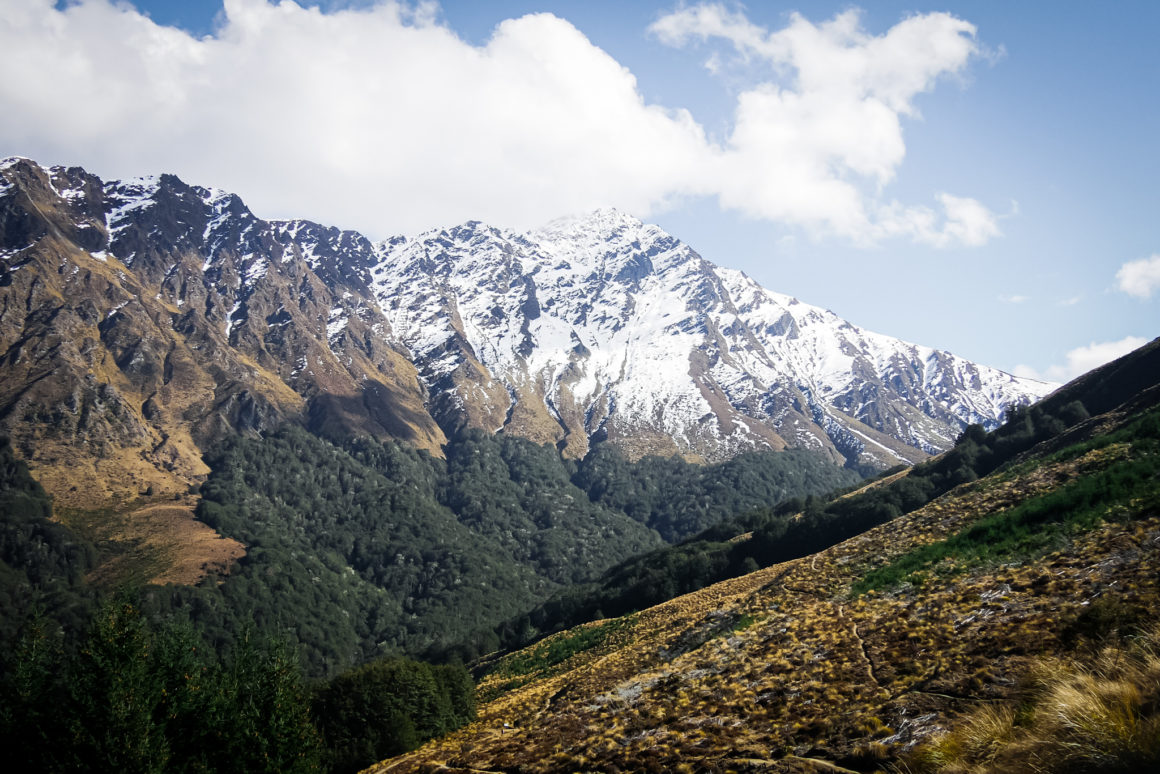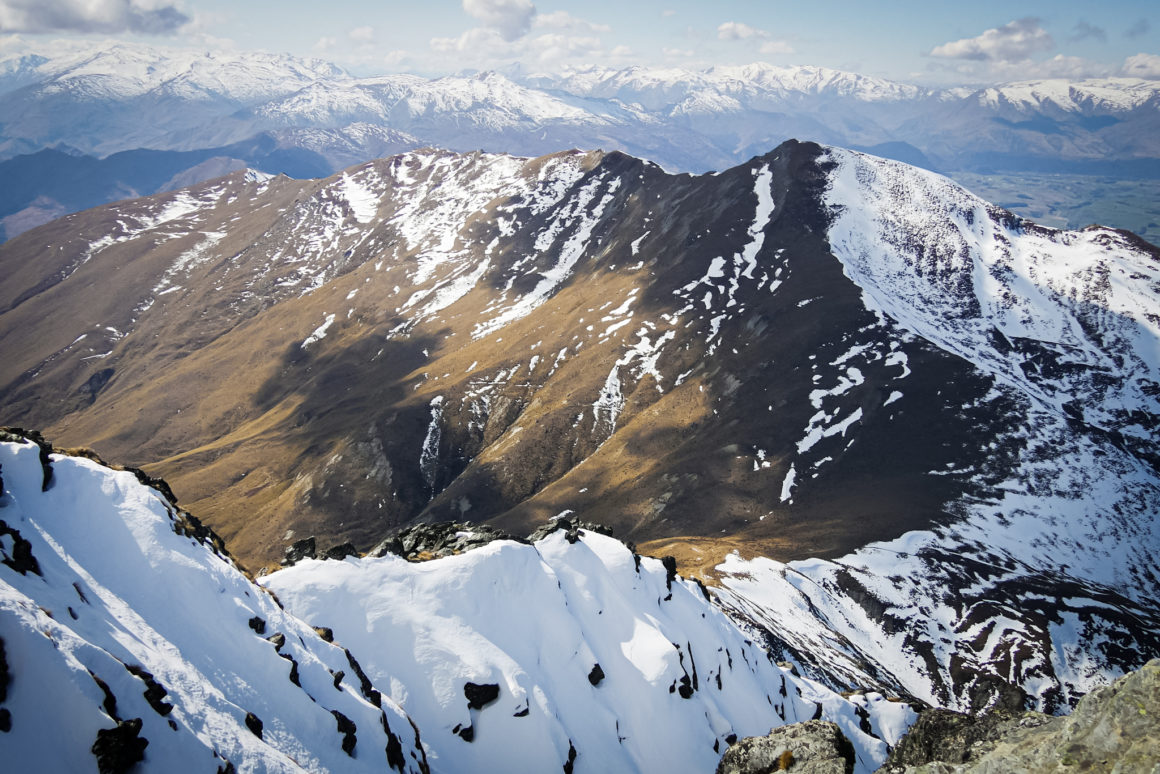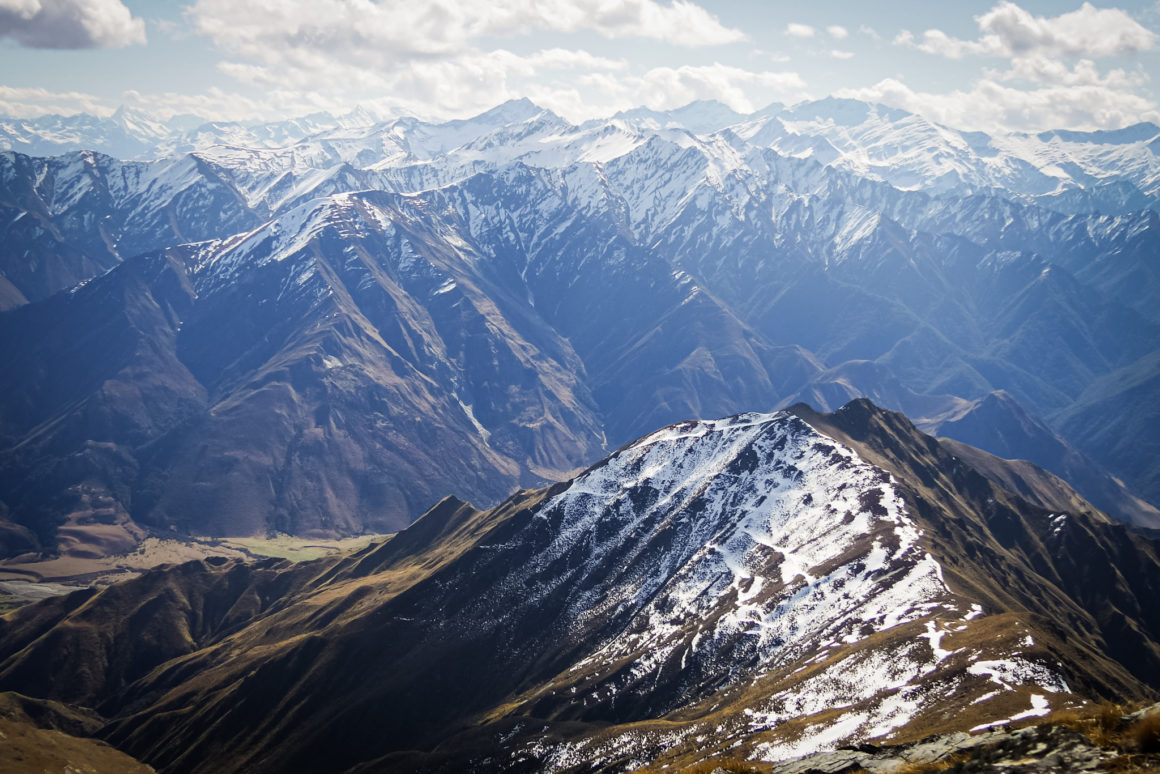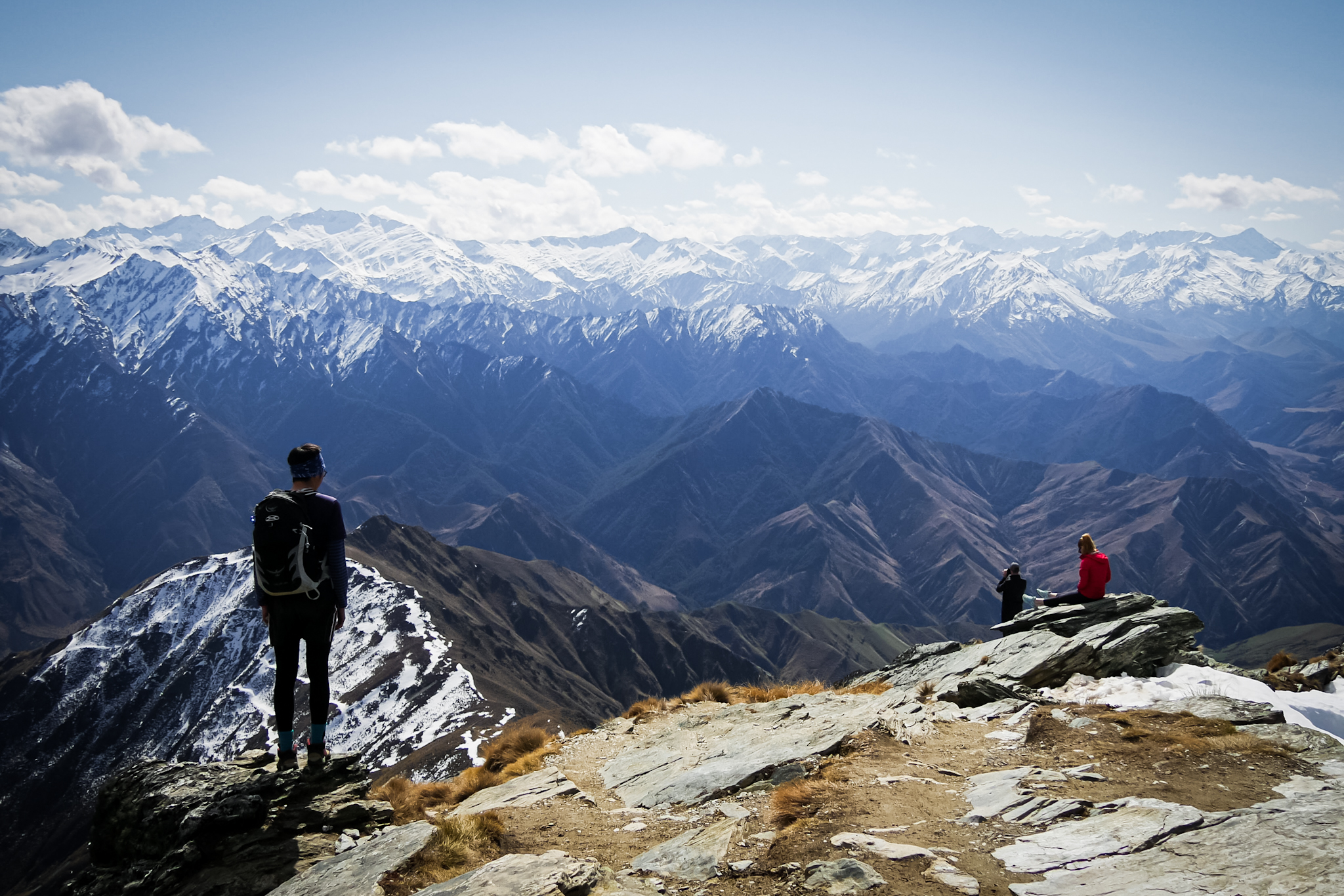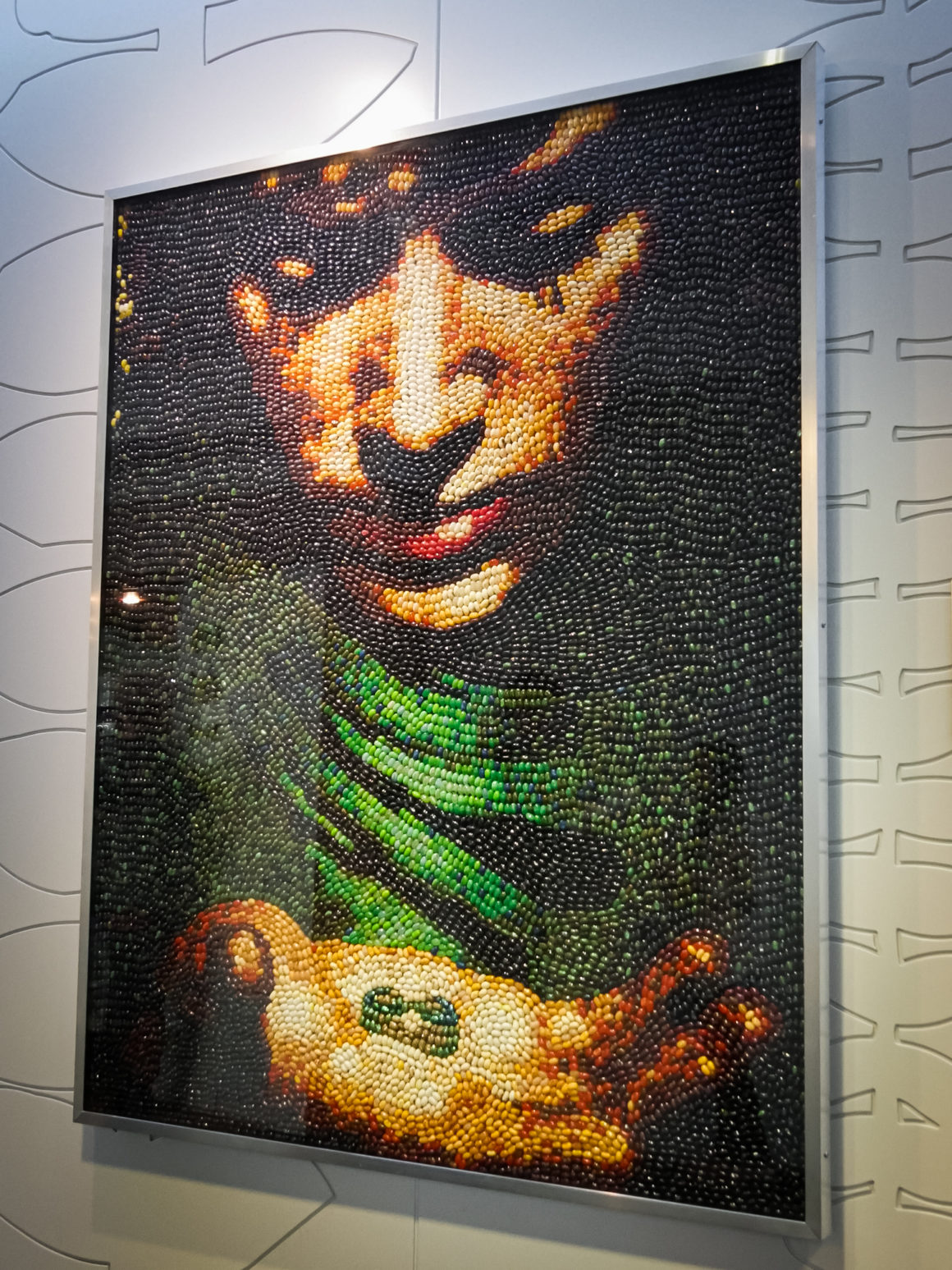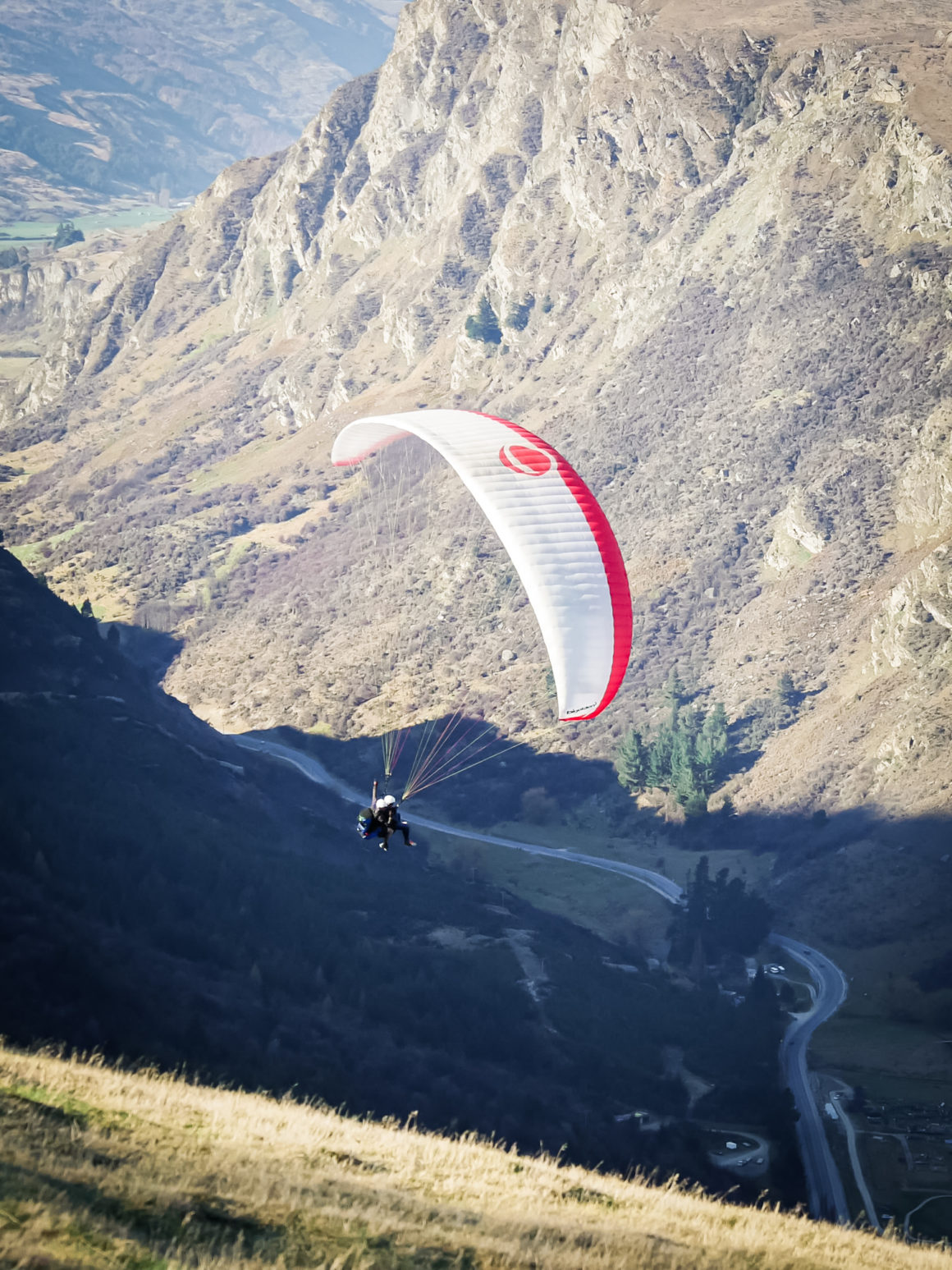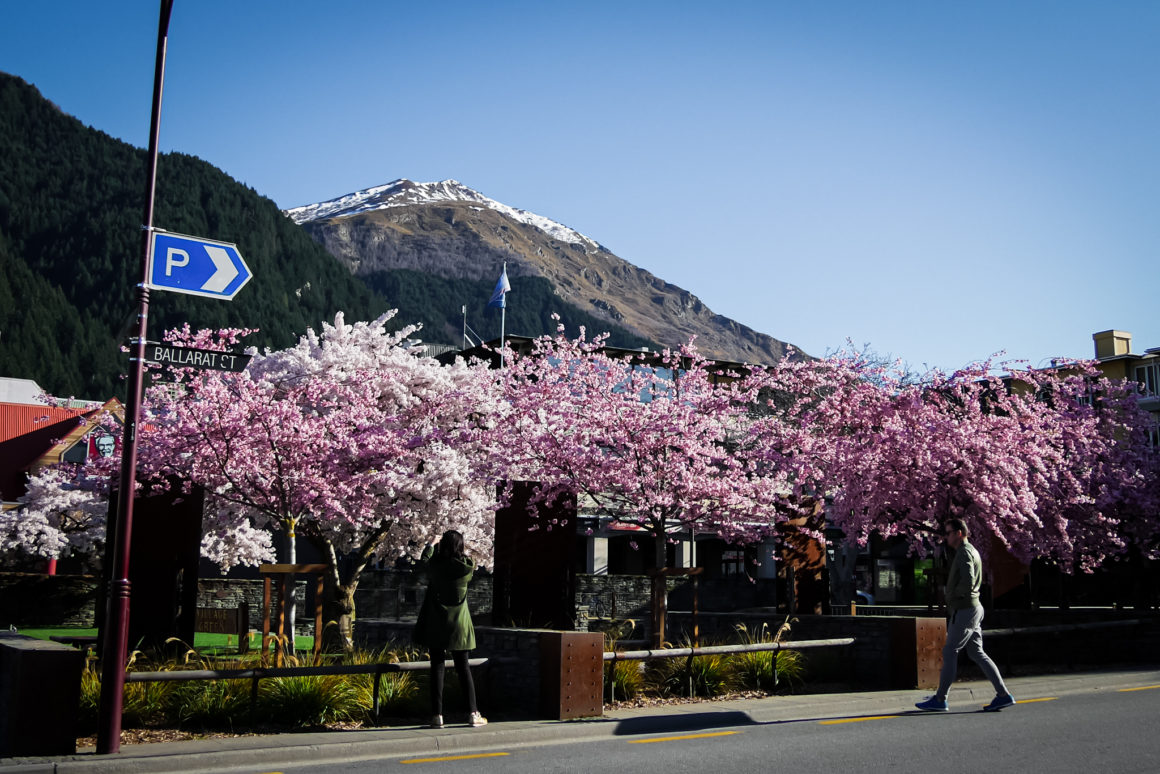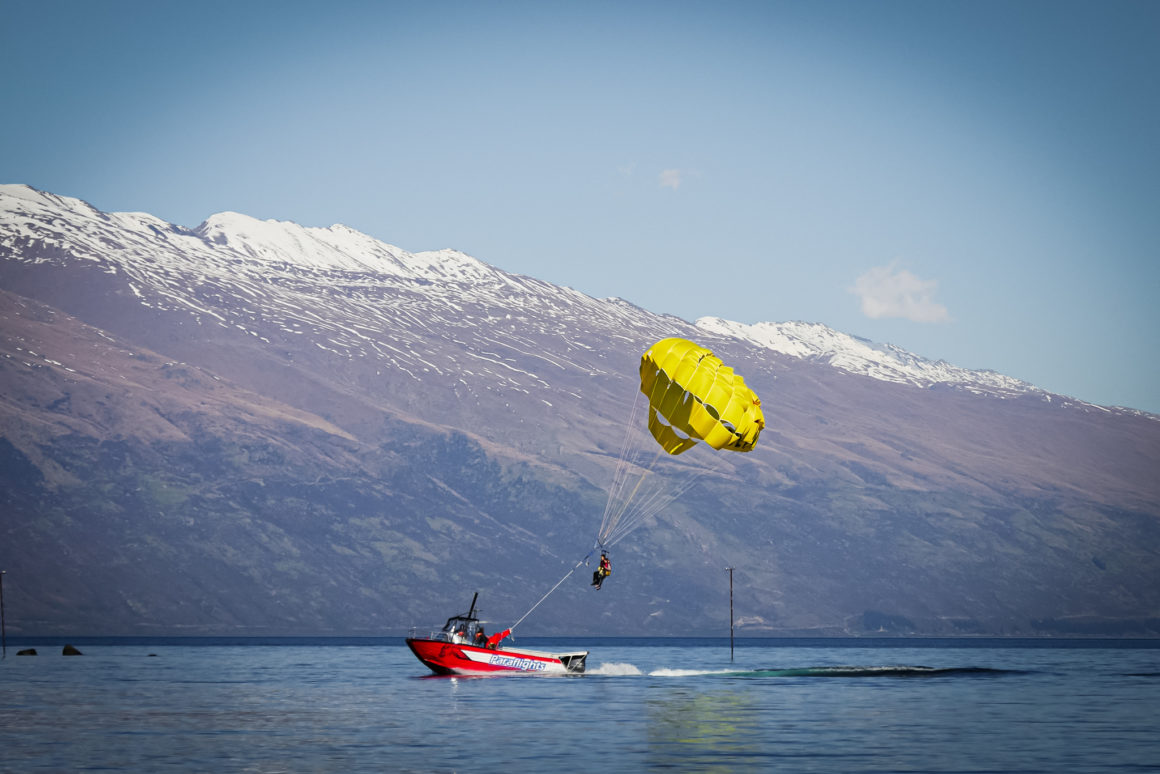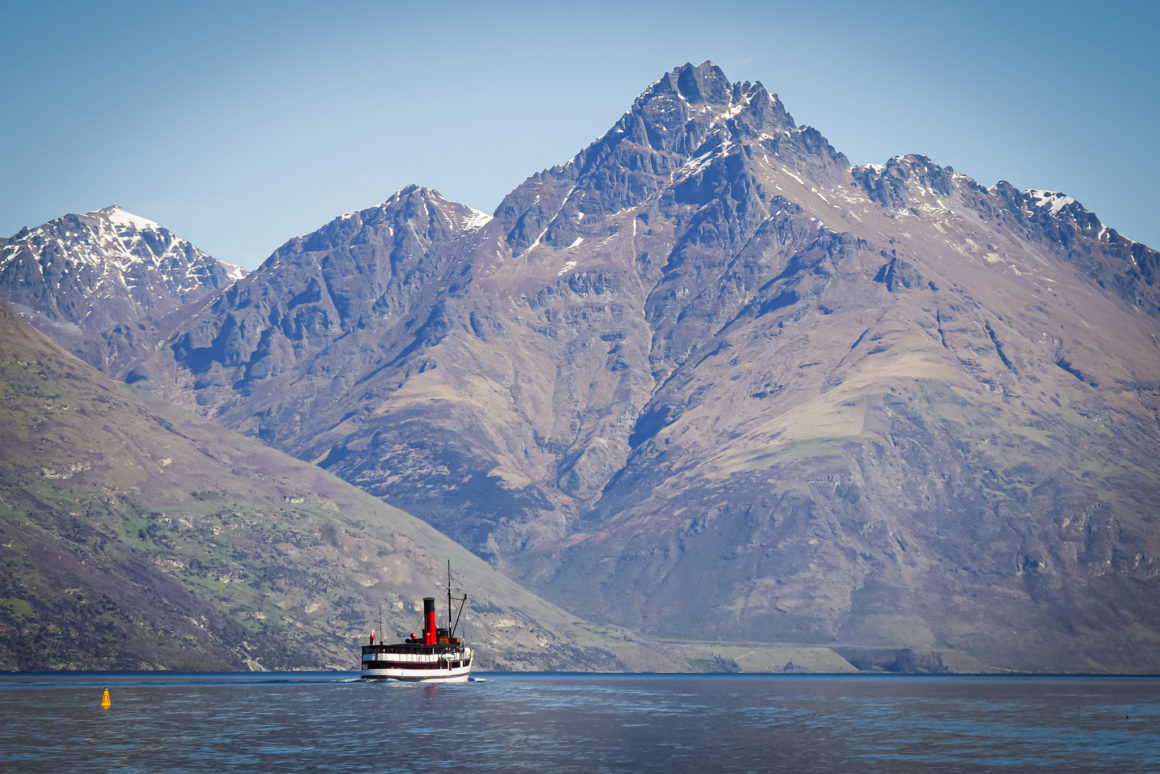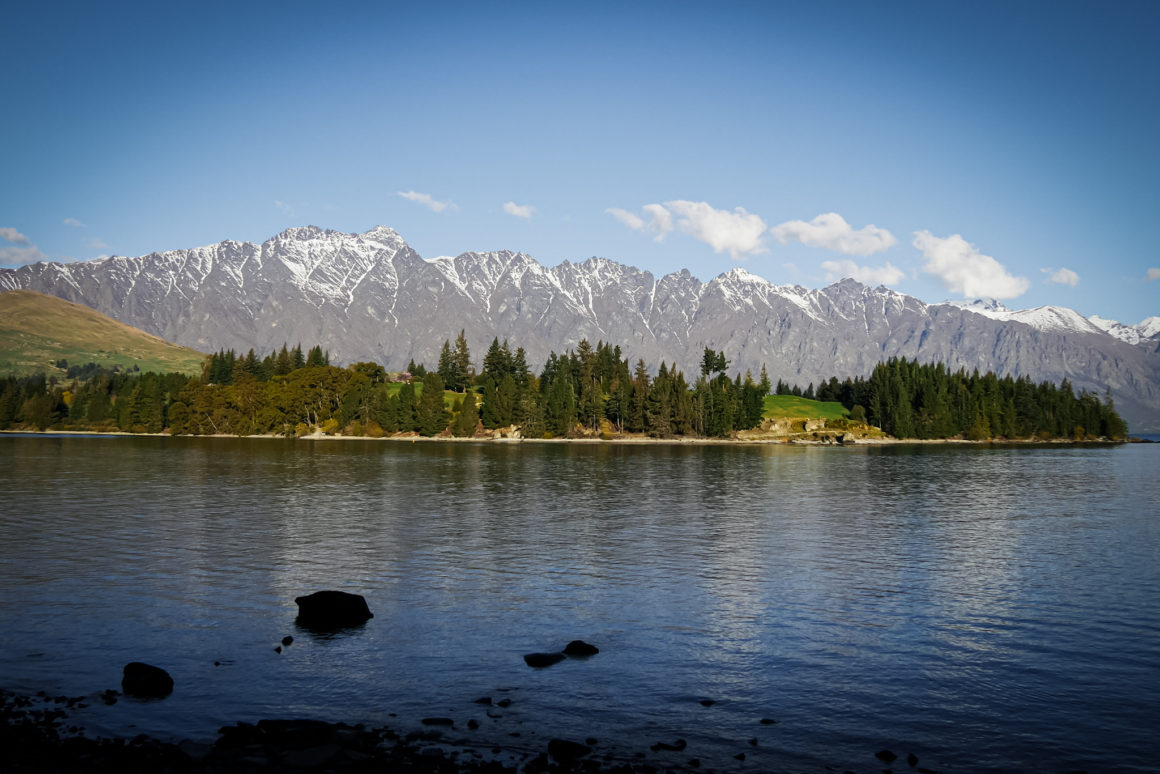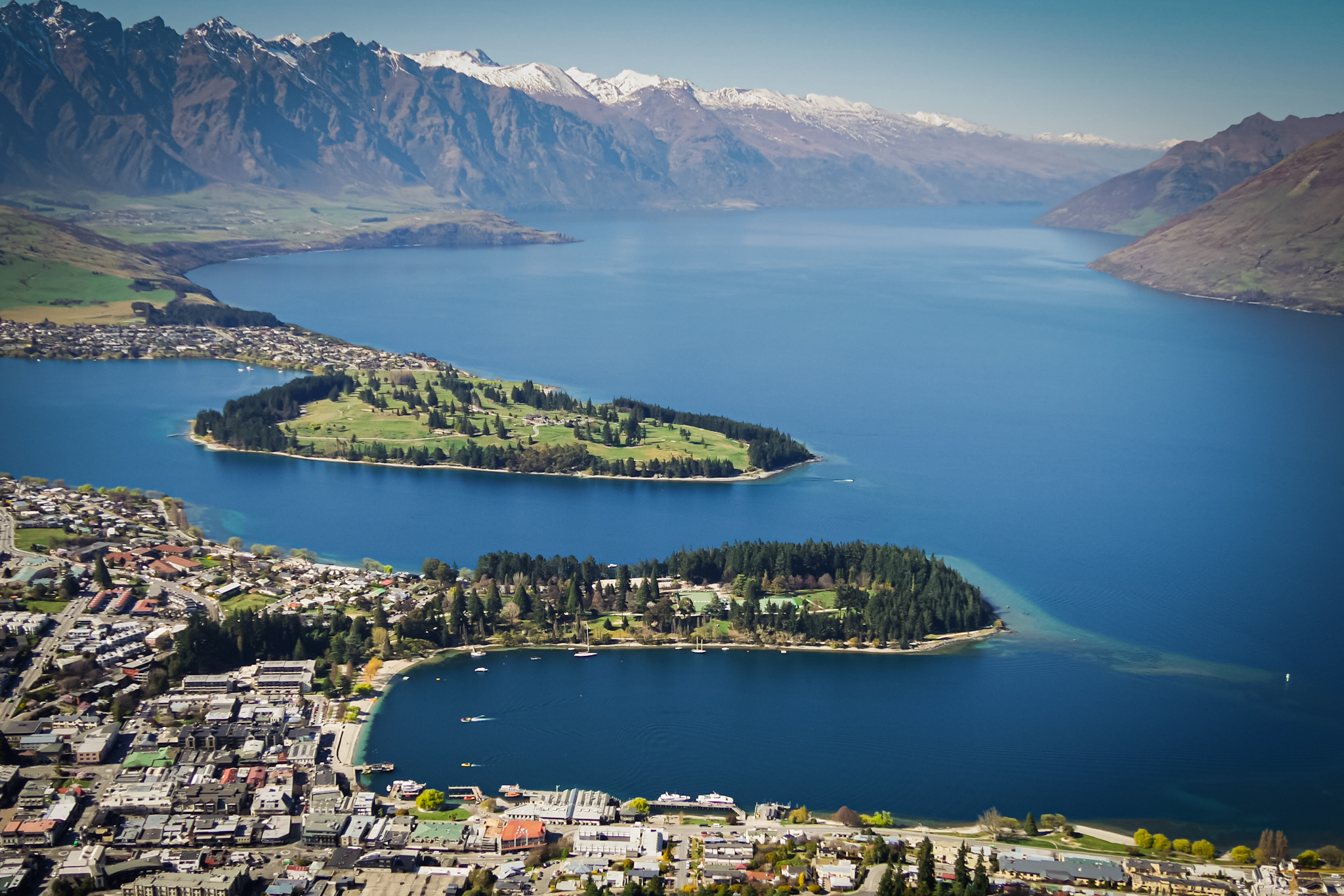DISPATCH
Monday, September 19, I leave the dairy farm where I work for three days to go visit Queenstown, the so-called adventure capital and the largest ski resort in Kiwi country. I leave Invercargill under a magnificent weather. The bus zigzags through the grasslands of Southland, filled with cows, sheep and deer. After two hours we reach the border with the Otago region where Queenstown is located and the landscape changes abruptly. Superb mountains appear with still snow-capped peaks. The road goes down into the valley along the Remarkables mountain range (home to a large ski resort) and the shores of Lake Wakatipu, the third largest lake in New Zealand. The landscape is beautiful. Around four in the afternoon, Queenstown finally appears, bordering the right bank of the lake. It is very hot and the place is full of tourists. After two months spent in the tranquility of the Southland meadows, I find it hard to adjust to the crowds. Young people pass me with skateboard and t-shirt or carry skis and snowboard. No skiing for me during my stay in Queenstown. The price of equipment and ski-pass is far too expensive. It will be two days of hiking instead.
The mountains surrounding Queenstown, the sun already begins to disappear at the end of the afternoon. I go around the small peninsula adjacent to the center where the Queenstown Gardens is located. Lots of people have fun with free Frisbees and it is quite noisy. The Remarkables chain in the background offers a superb decor. The small center is filled with shops and restaurants. Every twenty meters appears a booking agency offering different activities to do in the region: skydiving (parachute jump), bungee jumps, sledging, skiing and snowboarding, paragliding, cruises, Shooter Jet sessions (a speedboat powered at 85 km/h), helicopter flights, day trips to Milford Sound. There is no shortage of choices. The sun disappears behind the mountains and the temperature drops suddenly. I go back to my hostel, enjoying the quieter atmosphere of the city slowly emptied of its visitors.
The next day I wake up early to go climb Ben Lomond summit which overlooks Queenstown. 1748 meters above sea level. I start my walk by climbing the Tiki trail that runs along the Gondola, the cable car leading to the Skyline Complex located at the top of one of the hills surrounding Queenstown. The walk is very pleasant, in the forest and climbs steeply. It ss damn hot! After a good hour of climbing, I reach the complex where a lot of people have fun with summer toboggans, parachute jumps or bungee jumping. I spend some time watching people throw themselves into the void from a platform right next to the cable car. The elastic cord that holds them seems very thin to me. Apparently this does not scare tourists since none of them hesitate! Except for a young woman who when jumping will get stuck in fear. Despite ten minutes of encouragement from the team and the people watching, she will not jump. Inside the complex are several paintings entirely made with painted beans. The one with Frodo titled Lord of the Beans is very funny. Captin explains that it took 100 hours of work and over 20,000 candies to create the painting. From the platform, the view of the city below is impressive and allows me to see the different colors of Lake Wakatipu.
I continue my way by engaging on the Ben Lomond track. The path climbs quietly through a valley to a pass. Not a single cloud in the sky, luckily I thought about putting on sunscreen. I climb at my own pace amazed by the beauty of the mountains and the whiteness of the remaining snow on the peaks. Three hours of climbing later, I arrive at the pass and take my first steps in the snow. 1,326 meters above sea level. To my left is Ben Lomond peak and to my right Bowen peak, 1631m. Right in front of me, the superb mountain ranges of Fiordland and Mont Aspiring National Park. Several people descend from the peak and talk about the fact that they were unable to climb to the top because of the snow and mud. I continue with the desire to get to the top. The sun is strong and the slope is very steep. Some areas are covered with snow or a little muddy. But with the exception of those few areas where caution is advised, the rest is safe. Curiously, I find the beginning of the ascent more difficult than the end. As if after five hours of climbing, my muscles had adapted to the difficulty. Or maybe it is just the prospect of getting to the top. The last few meters are extremely alpine. The view is breathtaking. I finally arrive at the top and it is with great satisfaction that I sit down to have my lunch while enjoying the view.
I spend a long time observing the absolute beauty of the landscape. 360° of immensity and nature. Before me, the mountain ranges of Fiordland and Mont Aspiring National Park spread out their snowy peaks and impressive shapes. Behind me, Lake Wakatipu reveals its immensity. Few words can translate what I feel while observing the landscape. A mixture of satisfaction, fullness, wonder and joy. I would love to stay there forever but I have to go back down. I leave the summit behind me with regret and set off for four hours of descent. Tough on the knees and thighs but it doesn’t matter. I take my time to enjoy the landscape one last time and return to Queenstown.
The next day, my muscles express their dissatisfaction and it is full of pain that I go to the beach to have breakfast. Like yesterday the weather is magnificent. A few tourists begin to appear, but the atmosphere remains calm. Pretty cherry blossoms lay beauty spots in the city center. Despite the pain, I decided to climb to the top of Queenstown Hill, a hill “only” 907 meters above sea level just behind the center. The climb is very nice and despite the fact that it is less alpine than yesterday, my appreciation of the landscape is the same. The area is really beautiful! I come back down with some difficulties while taking advantage of the information panels to document myself on the history of Queenstown. The region was of course discovered by the Maori then in search of Pounamu (greenstone). The first crossing of Lake Wakatipu was carried out by Donald Hay, a Scot in August 1859. And the transformation of Queenstown into a ski resort dates from 1939. But it was especially after the Second World War, thanks to the free holidays offered by the government to returning soldiers (and their families) that the city turned into one of the country’s main tourist destinations.
I go back down to the center, buy my lunch and follow this time the banks of Lake Wakatipu. Lunch on a pebble beach then leisurely stroll along the shore. The TSS Earnslaw, an old steamboat passes regularly before my eyes. Formerly used to link Athol (south of the lake), Queenstown and Glenorchy (north of the lake), it is now used as a cruise ship. Beautiful Tui and Kereru accompany me with their melodious songs. My stay is coming to an end and I revel in the last moments contemplating the beautiful places. But all of this is a bit spoiled by the fact that the city is full of party tourists and by the constant noise of planes, helicopters, boats and jet skis. Queenstown, despite its beauty, is not really a quiet place.
Thursday morning, departure by bus from Queenstown to return to Invercargill where Julie, the lady of the farm picks me up. My days in Southland are coming to an end. I am going to leave the dairy farm this weekend. I decided to spend the rest of my trip in the Fiordland region. A new job in a Te Anau Holiday Park awaits me for the next few months. And I am going to take advantage of a week of rest to go on a multi-day hike.

